#restoration era
Explore tagged Tumblr posts
Text

The descent of the statue of Napoleon I from the top of the Vendôme column during the Bourbon Restoration, 8 April 1814
George Emmanuel Opiz
#La descente de la statue de Napoléon 1er du haut de la colonne Vendôme#George Emmanuel Opiz#Opiz#opitz#Georg Emanuel Opiz#napoleonic#napoleonic era#napoleon bonaparte#first french empire#french empire#19th century#history#Vendôme#place Vendôme#Vendôme column#1800s#print#Paris#restoration era#restoration#bourbon restoration
39 notes
·
View notes
Text
Hello fellow boat posters I really desperately need y’all to read the Matthew Quinton Journals. First book is Gentleman Captain and goes so fuckin hard!! It’s restoration era English navy historical fiction series written by a naval historian and it SLAPS!! And no one seems to know about it! Highly recommend
And if you have read them please message me so we can talk about them!!!
13 notes
·
View notes
Text
So anyway I've been reading about Restoration era writers & also learned that in Jane Eyre, Mr. Rochester may have been partly inspired by the Restoration era poet John Wilmot Earl of Rochester, rambunctious sex legend & asshole extraordinaire. I totally support this theory & may include a reference to it in my Jane Eyre fic if I ever update it.
Interesting finds from John Wilmot and Mr. Rochester by Murray G. H. Pittock:
"Mr. Rochester is to an as yet unappreciated degree based upon the character and reputation of his namesake, John Wilmot, the second Earl of Rochester, whose career as it was popularly recorded is the model for the rakehell and penitent phases underlying the development of Mr. Rochester's character." (P 462)
"the Earl's mother 'was a daughter of Sir John St. John, an ancient family of Wiltshire.' The coincidence of the name with that of the alter hero of Jane Eyre is of course striking. This tract also contains an extended passage concerning Wilmot's propensity for disguise, a common feature of the religious Lives." (P 464)
"In both the real man and the fictional character, cynicism and misanthropy turn to faith. As early as Etherege, then, John Wilmot had become a literary archetype, the "devil-angel" of the wicked rake. But he was also, in the alternative tradition of the religious tracts, an archetype of the repentant sinner. Wilmot's pious end made him respectable, and he was in every sense an ideal figure on which to model his fictional namesake." (P 469)
"It is Mr. Rochester who characteristically uses Christian imagery to describe erotic feelings [..]" (P 462)
"Mr. Rochester associates himself with the devil. Quoting from Paradise Lost, he asks Jane 'not to attribute to me any such bad eminence' (p. 166)." (P 463)
i didn't know this but i mention paradise lost in my fic! even tho in her novel shirley, charlotte disses milton's depiction of eve (which i 100% agree with; my last semester i took an english renaissance class wherein i wrote about paradise lost & eve's oppression lol). heathcliff is also miltonian as i acknowledged in a prior post!!!
"Such talk of heaven and hell in the interests of passion are echoes in fact of Mr. Rochester's famous namesake." (P 463)
"The material that Bronte would use in creating the hero of Jane Eyre from his namesake was freely available at the time, and not only through the means of pious hearsay. Burnet's own account is based on interviews with the dying Earl, and because Wilmot's death was finally a pious one, the less risqué of his poems were often found in print. So thoroughly was Wilmot's profligate life associated in the late eighteenth and early nineteenth centuries with his deathbed conversion, that it comes as no surprise to find his poems published in 1821 alongside those of Dr. Spratt, the Bishop of Rochester, in a one-volume collection enticingly titled The Cabinet of Love? Moreover, Burnet's Life was long popular, as its several editions testify, even in the "best" literary circles. Both Horace Walpole and Samuel Johnson wrote critiques which were incorporated into the edition issued in 1820. Such widely disseminated tales of reformed rakes and deathbed conversions were an important part of the literary culture of Brontes youth, reinforced by the Methodism introduced into the family circle by Aunt Branwell. It was not at all unusual, then, that Bronte should turn to John Wilmot in creating her own Mr. Rochester." (P 464)
"Passion untamed by religion until the moment of crisis is a mark of Charlotte Brontes fiction, and to make that mark, who better than a famous rake and a famous convert, John Wilmot, Earl of Rochester?" (P 469)
From John Wilmot, Mr Rochester and William Harrison Ainsworth by Robert Dingley:
"it is also possible that she drew hints from the Earl's depiction in William Harrison Ainsworth's bestselling novel Old St. Paul's (1841), where the Restoration rake displays a chameleon-like facility in disguise and twice attempts to entrap the woman by whom he is obsessed (and who in turn loves him) in spurious wedding ceremonies."
#jane eyre#mr. rochester#paradise lost#excerpts#analysis#my essays#my writing#john wilmot#earl of rochester#history#restoration era#victorian era#victorian literature#literature#english literature#poetry#lit#interesting#charlotte brontë#charlotte bronte#mr rochester#life imitates art#art imitates life#murray g. h. pittock#robert dingley#academia#research#quotes#rakes
24 notes
·
View notes
Text
Why are all the Restoration era men so hot???
Not that I'm complaining obviously.
#THEY'RE ALL FIIIIINEEEE#restoration court#restoration#restoration era#restoration king#my boys#17th century
5 notes
·
View notes
Text
I need an autistic person to tell me everything they know about Charles II and the restoration period in London
#dont ask questions#just yap#hyperfixation#charles ii of england#restoration era#restoration era london#london history#autism#preferably gay as well
0 notes
Text
charles ii being called "the merry monarch" is sooo funny to me since i realised merry monarch is synonymous to gaylord
1 note
·
View note
Note
1) DAMN, THE DUO HAD SOME HEIGHT OF COURAGE! WHO THE HELL DOES THAT, ESPECIALLY WHEN YOUR LOVER IS SAT ACROSS FROM YOU?!?!?!
2) Too cute for words 🥺❤️
3) More courage! Nell, I love you 😂😂😂!
What are your 3 favorite anecdotes from the Restoration?
1. Charles II’s brother, James (later James II) is sitting with his new lover, Lady Chesterfield, at the Queen’s card table. No one actually knows that they’ve been screwing and James’ OFFICIAL mistress, Lady Denham is sat across from them, quite unaware. James, being the sex #freek he was (he had a kink for green stockings), decides this is a great opportunity to time to start trying out public sex. He starts to do his thing under Lady Chesterfield’s skirts, both of them are probably having a jolly old time knowing that everyone is completely unaware that James is gonna make her lose her mind right there at the table. That is UNTIL they are clocked by Lord Hamilton, who reported the story (that’s how we know it happened). He says that he noticed James’ arm had disappeared under the table and under Chesterfield’s skirts “right up to his elbow” and as soon as James sees that he’s been found out, he pulls his arm up and out of that pussy so fast and so aggressively that he ‘almost undressed Lady Chesterfield in the process’ and no doubt almost caused the card table to collapse. Lady Denham is horrified but holds her tongue, saving her shouting for later. Lord Hamilton tells Lady Chesterfield’s husband, who in turn confronts James a few days later, effing and blinding.
2. Rake and wit Charles Sedley (known to his court friends as Sid the Kid) brings his little daughter, Catherine Sedley (who will later grow up to ALSO be a mistress of James II but that’s a story for another day) to a meeting with his pals. His bff, the Earl of Rochester is there, so presumably is Harry Savile, Charles Sackville etc. etc. Harry Killigrew is for sure there because he recorded this. These men who we now characterise as aggressive sex fiends and ruffians are absolutely BESOTTED with little Catherine. They nickname her Sid the Kid’s Kid. They’re cooing over her, and Catherine has brought all her dolls along to show them. Rochester puts Catherine on his knee and has a little chat with her about her dolls. Apparently, she showed them to him individually. One by one.
3. Nell Gwynn is feeling like this one afternoon, she wants to get the royal treatment from Charles II for a few hours but he’s having a really important chat with boring boring boring men like Shaftesbury and other Puritan sadfaces. But Nell wants SEX RIGHT NOW so she interrupts the conversation, tells Charles exactly what he should be doing (hint: it’s her), shocks all of his fusty ministers with her straightforwardness and vulgarity, and presumably it worked because Charles quickly ends business and goes to find her.
(in truth, there are so so many more….the Restoration era is like a fever dream. It’s like when Alice falls down the rabbit hole in Alice in Wonderland)
#stuartposting#stuarts#17th century#restoration era#restoration england was a trip guys#we have a pretty witty queue
67 notes
·
View notes
Text
“vintage” - Jegulus microfic - @into-the-jeggyverse - 253 words
Regulus is standing with James in their garage looking at what is probably the saddest excuse for a car Regulus has ever seen.
“It’s old.” Regulus says.
“It’s vintage.” James counters.
“It’s ugly.” Regulus is walking around the car.
“It’s… okay, yes, it is ugly. But it won’t be when I’m done with it.” Regulus walks towards James with a skeptical look.
“I promise, it’ll be beautiful. You’ll see.” James tells him. “Please, can I keep it?” James pouts.
Regulus smiles fondly at James and wraps his arms around his waist.
“Jamie, you don’t need my permission to keep it. But I don’t understand why you don’t just want to buy a new car. You know, one that actually runs?” Regulus asks him.
“Restoring it, rebuilding it, is the whole point. It’s not just about the car, it’s about the process.” James has a glimmer in his eyes that makes him look absolutely beautiful.
“The process?” Regulus says, amused and endeared by how excited James is.
“Yes! It’ll be fun. Doesn’t it sound fun?” James runs his hand over the hood of the car and his finger tips turn black from the dust and dirt.
“It sounds dirty.” Regulus tells him.
“You don’t want to help?” James teasingly wiggles his fingers towards Regulus.
“I’ll watch.” Regulus grabs James’ wrist to avoid the dirt but uses his hold on him to pull James in for a kiss.
And Regulus quickly realizes that watching a sweaty, greasy, dirty James is, indeed, a lot of fun.
#regulus is like#you know we’re both ridiculously rich right?#we could buy 6 vintage cars#but he supports james’ hobbies#is car restoration a hobby?#i know nothing about cars#hope this was at least somewhat accurate#regulus loves james#james loves regulus#jegulus#jegulus microfic#jegulus fanfiction#marauders fanfiction#marauders#regulus black#james potter#james x regulus#harry potter marauders#harry potter#hp#hp marauders#marauders era#dead gay wizards from the 70s#dead gay wizards#jeggyverse microfic
517 notes
·
View notes
Text
ik we still have zounds ("'swounds") ("god's wounds") but we should bring back "'sblood" ("god's blood"), "'sdeath" ("god's death"), & "'sflesh" ("god's flesh") as oaths
#tgis is what reading restoration era english has persuaded me of#<- where they appear#thoughts#language#i think some are in shakespeare also but i'd need to check
1K notes
·
View notes
Text
Reaction at the French Parliament on the death of Napoleon
The news of Napoleon’s death reached London on 4 July 1821 and Paris the day after. On 6 July, there was an incident at the French Parliament: an ultra-Royalist MP called Napoleon “the usurper” before being silenced by a Liberal who shouted: “he is dead!”
(Source)
#LOL#The MP was M. Duplessis Grenédan. (C.L. Lesur Annuaire Historique universel pour 1821 Paris Fantin Treuttel & Wurtz Delaunay p. 220.)#Byron's Dithyramb on the Death of Napoleon and the lessons of apocryphal works#parlement#Napoleon#napoleon bonaparte#the death of napoleon#Napoleon’s death#napoleonic#napoleonic era#restoration era#bourbon restoration#France#history
6 notes
·
View notes
Text







TNG sets that were rebuilt from scratch or - in the conference lounge's case - restored to their previous condition for Enterprise's "These Are the Voyages..." (2005)
#looks like they ran out of money on the turbolift lmao but thats a lot of money spent on rebuilding these sets#The Conference Lounge had been adapted for the First Contact era movies and then restored to the TNG era look per memory alpha#Star Trek#Star Trek Enterprise#Enterprise#These Are the Voyages#TNG#Secret Enterprise Rewatch#Set Design
111 notes
·
View notes
Text
On Lord Byron and Count Alfred D’Orsay:

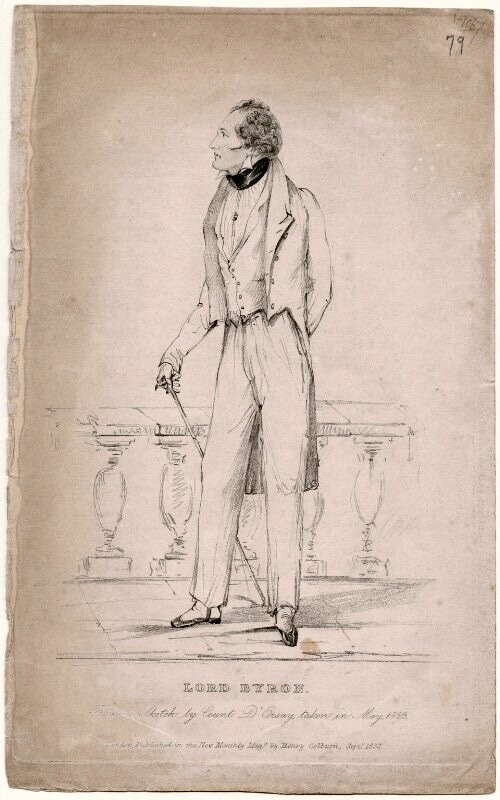



Above are sketches of Lord Byron taken from life by Count Alfred D’Orsay, who Byron described as “a very handsome companion,” “one of the few specimens I have seen of our ideal of a Frenchman,” and who he nicknamed "the young philosopher" and “Cupidon déchaîné” (“raging Cupid”) after a scene from the 1707 play The Beaux' Stratagem by George Farquhar, where a man describes what the ideal portrait of his lover should look like:

Count D’Orsay was famously called the “archangel of dandyism.” He was an artist for the elite, a writer of observation, socialite, dandy, Bonapartist, “man of fashion,” and long-time adulterer with the writer Lady Blessington, whose daughter she had him marry as a front. They divorced, and he eventually died in Paris buried in debts with Lady Blessington. She was a close friend of Lord Byron which is how he got to know D’Orsay better, since D’Orsay lived and travelled with the Blessington family, the husband of which he is also sometimes speculated to have had an affair with. Byron exchanged lavish gifts with the Blessingtons: “I also enclose a ring which I would wish Alfred to keep — it is too large to wear but is formed of Lava — and so far adapted to the fire of his years and character.” D'Orsay was in his early twenties and had already become a popular figure.

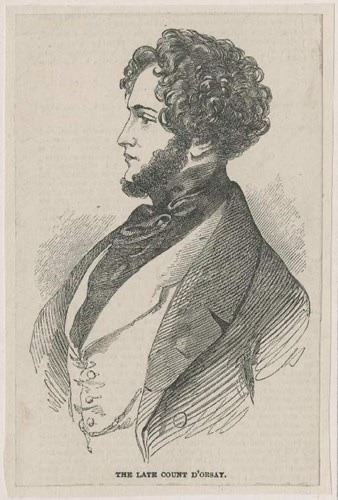

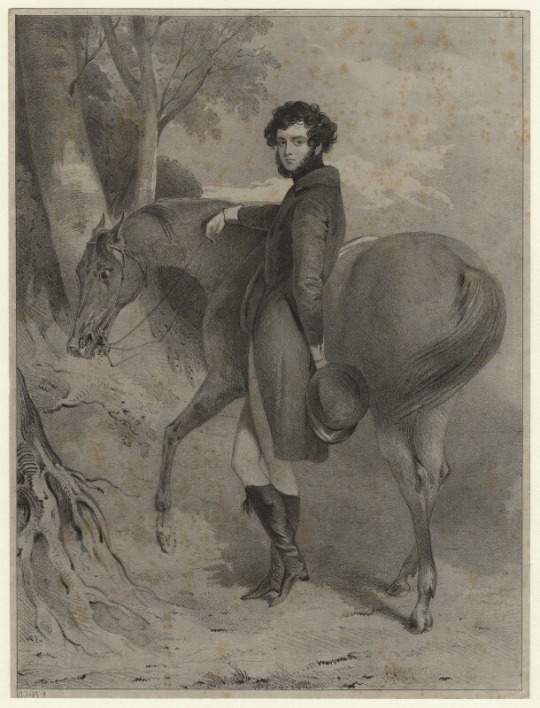
A letter Byron wrote to Count Alfred is as follows:
"April 22. 1823.
My dear Count — (if you will permit me to address you so familiarly), you should be content with writing in your own language, like Grammont, and succeeding in London as nobody has succeeded since the days of Charles the Second and the records of Antonio Hamilton, without deviating into our barbarous language, — which you understand and write, however, much better than it deserves.
"My 'approbation,' as you are pleased to term it, was very sincere, but perhaps not very impartial; for, though I love my country, I do not love my countrymen — at least, such as they now are. And, besides the seduction of talent and wit in your work, I fear that to me there was the attraction of vengeance. I have seen and felt much of what you have described so well. I have known the persons, and the re-unions so described, — (many of them, that is to say,) and the portraits are so like that I cannot but admire the painter no less than his performance.
But I am sorry for you; for if you are so well acquainted with life at your age, what will become of you when the illusion is still more dissipated? But never mind — en avant! — live while you can; and that you may have the full enjoyment of the many advantages of youth, talent, and figure, which you possess, is the wish of an — Englishman, — I suppose, but it is no treason; for my mother was Scotch, and my name and my family are both Norman; and as for myself, I am of no country. As for my 'Works,' which you are pleased to mention, let them go to the Devil, from whence (if you believe many persons) they came."
From the biography D'Orsay; or, The Complete Dandy (Teignmouth, 1911):
"But it is of importance to know that he fell before the charms of the irresistible D'Orsay. Indeed so blinded was he with admiration that he not only discovered the young Frenchman to be 'clever, original, unpretending,' but also stated that 'he affected to be nothing that he was not.' We fancy D'Orsay would not have counted an accusation of modesty as a compliment."
Sources: Lord Byron's letters and journals, Lady Blessington's letters and journals, D'Orsay; or, The Complete Dandy by Teignmouth, 1911.
#fun fact: LB mainly allowed artists to depict his right side bc he said it was his better side#he told d’orsay to add a cap to the one drawing to hide his receding hairline LMAO#diva behavior#his stock looks like a collar#english literature#literature#plays#George Farquhar#lord byron#count alfred d’orsay#portraits#1800s#georgian era#restoration era#art#history#romanticism#lgbt
23 notes
·
View notes
Text
Thinking about Charles II dying only two days ago.
*cries*
And Nell wasn't allowed to go in and everyone heard her crying loudly outside.
And James was crying too.
💔😭
#charles ii#nell gwynne#james ii#restoration#restoration king#restoration court#restoration era#17th century#this is too sad#don't do this to me#he died on his niece's birthday as well#merry monarch#my boy#my boy (heartbrokenly)#stuartposting
7 notes
·
View notes
Text

coffee part 2 - reunion arc as a treat !!
Ingo's still getting back on track and isn't quite ready to go back to the Station - though, he'll still get ready in the morning with Emmet, like always !!
things the same but different... warm and cozy resolution bc its what we deserve
#submas#pokemon#ingo#pokemon black and white#pokemon legends arceus#subway boss emmet#pokemon art#ingo entering his stay at home sneasel dad era#memory restored. unbothered. moisturised. happy. in his own lane. flourishing#subway boss ingo#pokemon fanart#pkmn#existential dread who??
1K notes
·
View notes
Text
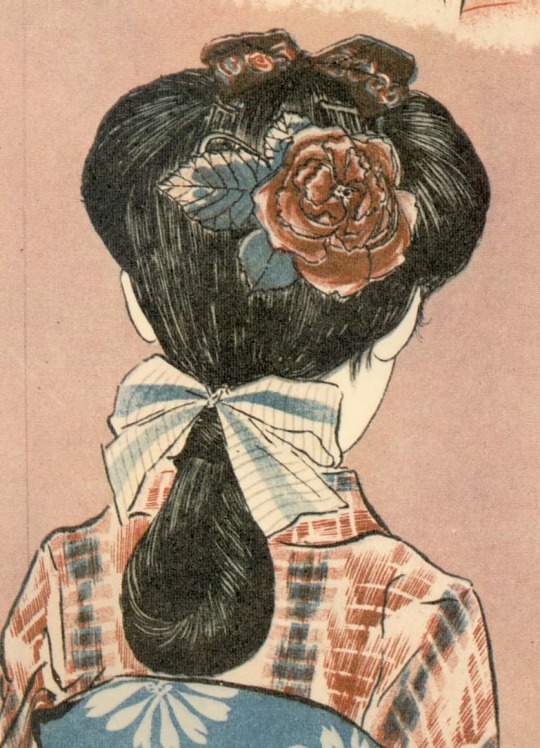
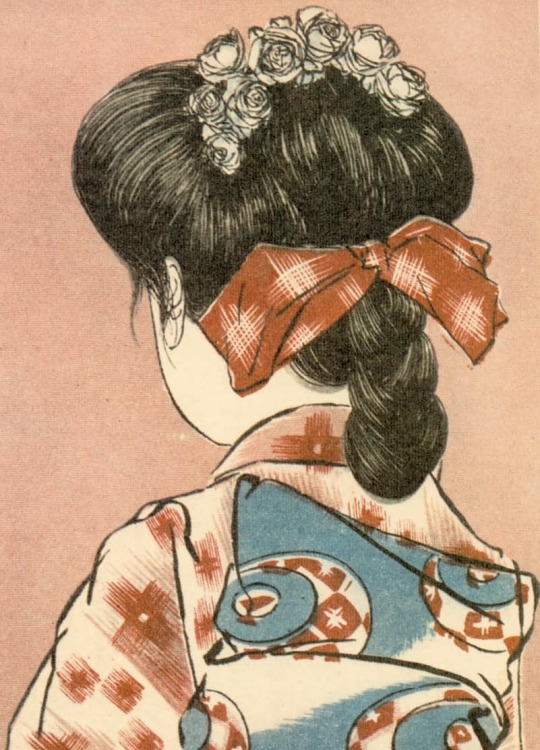
the マガレイト (magareito) hairstyle, popular among school girls and young women during the late meiji to early taisho period
#meiji era#meiji period#meiji restoration#taisho era#taisho period#kimono hairstyles#japanese hairstyles#historical hairstyles#japanese illustration#japanese art#writing moodboard
333 notes
·
View notes
Text

Children Playing in the Snow under Plum Trees in Bloom (Secchū baisō gunji yūgi zu) - woodblock print by Yoshu (Hashimoto) Chikanobu
38 notes
·
View notes